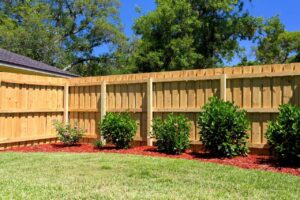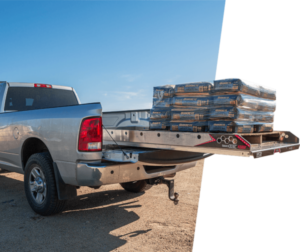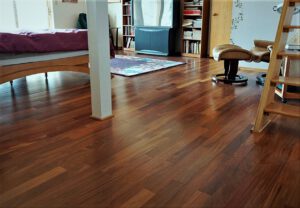Concrete Contractor Colorado Springs is an expert in constructing and repairing concrete structures. They can build a patio, install a sidewalk, and even fix cracks in an existing concrete slab.
Successful contractors prioritize client satisfaction by ensuring transparent communication and meeting deadlines. They also foster supportive relationships with suppliers, architects, engineers, and other project stakeholders.

A concrete contractor is a construction professional who specializes in building concrete structures. They are responsible for building foundations and erecting structures such as driveways, sidewalks, and patios. This career requires a variety of qualifications including education, experience and licensing. If you’re interested in becoming a concrete contractor, learn about the necessary steps to take to get started!
Depending on the state in which you are licensed to work, you will need an associate’s or bachelor’s degree in civil engineering. In addition, you will need to pass a background check and demonstrate that your company is financially solvent by posting a bond. You will also need to acquire a concrete license, which varies by state. In the United States, you can find this information by visiting the website of your state’s department of labor.
It is also important for concrete contractors to be knowledgeable of the different materials used in construction, such as steel, wood and cement. This helps them to make informed decisions about which type of construction materials are best for each job. In addition, they should have an understanding of safety protocols and regulations.
When choosing a concrete contractor, it’s important to look for one with extensive experience. This will ensure that they know how to properly install concrete and have a track record of success. You can also ask your potential concrete contractor for references from past customers.
It’s also a good idea to choose a concrete contractor that is licensed and insured. This will protect you in case the contractor is injured on your property while working on a project. It’s also a good idea to look for contractors who have an up-to-date portfolio of their previous work.
In order to become a certified pervious concrete installer, you will need to complete a written exam and obtain field experience. In addition, you will need to attend training programs sponsored by local sponsoring groups. The technician level certification is intended for contractor and non-contractor personnel such as ready mixed concrete personnel, testing labs, inspectors, admixture personnel and engineers who need to learn how to install pervious concrete.
A concrete contractor must obtain a license from his or her state in order to perform work on jobs that require this type of skill. This license process is not the same in every jurisdiction, but it typically requires passing an exam and meeting minimum financial requirements. Some states may also require background checks and criminal checks for contractors. A concrete contractor must also choose a legal entity to operate as, which can be a sole proprietorship, partnership, corporation or limited liability company.
Once a contractor is licensed, he or she must obtain any permits required for the specific job. Permit requirements vary by jurisdiction and include things like a building permit, a zoning permit or a construction permits. Permits are necessary to ensure that the concrete contractor is following all local and national codes and regulations for safety. They are also often needed to ensure that the job is done properly and does not end up costing the client extra money due to mistakes or unforeseen issues.
for example, concrete flatwork is required to be tested. The test results are used to determine if the concrete meets the structural design of the project. If the results are not satisfactory, the project must be halted until the contractor corrects any problems.
Many states require concrete contractors to be bonded. This assures that the concrete contractor is capable of finishing the job and will not go out of business. It is essential to hire a bonded concrete contractor for larger projects that involve more than a few days of work.
If you’re hiring a contractor for a smaller project, such as adding a patio or sidewalk to your home, you may not need a bond. However, it’s always best to check with your local building department to see if a permit is required for any type of concrete work. Failure to get a permit or to do the work correctly can result in a fine, as well as problems with financing, insuring and selling your property in the future.
A concrete contractor has to have experience working with a wide range of construction materials. They also have to know how to prepare a site before they begin the job and what permits are needed for the project. They should be able to give you a reasonable estimate for how long the work will take. Some concrete projects are completed in a matter of days, while others may take weeks or even months.
A professional concrete contractor will have a portfolio of their previous work that you can look at. They will also be able to answer any questions you might have about their work and provide a written estimate for the project.
Some contractors may specialize in certain areas, such as foundations or driveways, while others might offer additional services such as masonry or carpentry. You might want to hire a contractor who can handle multiple tasks because it will save you time and money.
You should check the licenses and insurances of a concrete contractor before hiring them. They should have liability, worker’s compensation, and company auto insurance. These are all essential to ensure that the contractor will be able to complete the project in a safe and efficient manner.
Local concrete contractors are the best choice because they have a better understanding of building codes and regulations in your area. They also understand what kind of weather conditions need to be taken into account when completing outdoor projects such as patios or driveways.
Another important thing to check is whether or not the contractor has a bond and insurance. This will ensure that they can finish the job and not run off with your money. A reputable contractor will also have the proper equipment to complete the project quickly and correctly. This includes a portable mixer, wheelbarrows, floats, and shovels.
Finally, you should ask the concrete contractor about their pricing structure and whether or not they have any hidden fees. They should be able to give you an estimate for how much the project will cost and how long it will take them to complete the work.
Concrete is a vital construction material used to create walls, roads and floors. Concrete subcontractors use their skills to build these surfaces and structures, but they also need business management acumen to operate their businesses efficiently. This includes making confident decisions regarding hiring, accounting and estimating. Subcontractors that master these skills can take the lead at their company, increasing productivity and profitability.
Concrete contractors build many different types of projects, from residential to commercial. In order to attract clients, they need a comprehensive portfolio that showcases their work. This portfolio can be a website or a portable collection of project photos that contractors bring to client meetings. A portfolio should include a brief description of the project, its location, the techniques employed and when it was completed. Some contractors also include testimonials and industry affiliations on their websites and in their portfolios.
A great way to showcase your polished concrete work is to have a coffee table book, that can be shared during meetings. This is especially helpful when meeting with architects, home owners or general contractors who may not be familiar with your work style.
In addition, a portfolio can be bolstered by demonstrating your team’s efficiency on the jobsite with project management software that is built for the needs of concrete contractors. A project management solution that collects data from the foreman’s Daily Report and seamlessly transfers it into Cost-to-Complete or Labor Efficiency reports delivers valuable information on how well the project is performing and helps predict costs for future jobs. Using this data, a concrete contractor can be confident that their crew is working effectively and the project is on schedule.








